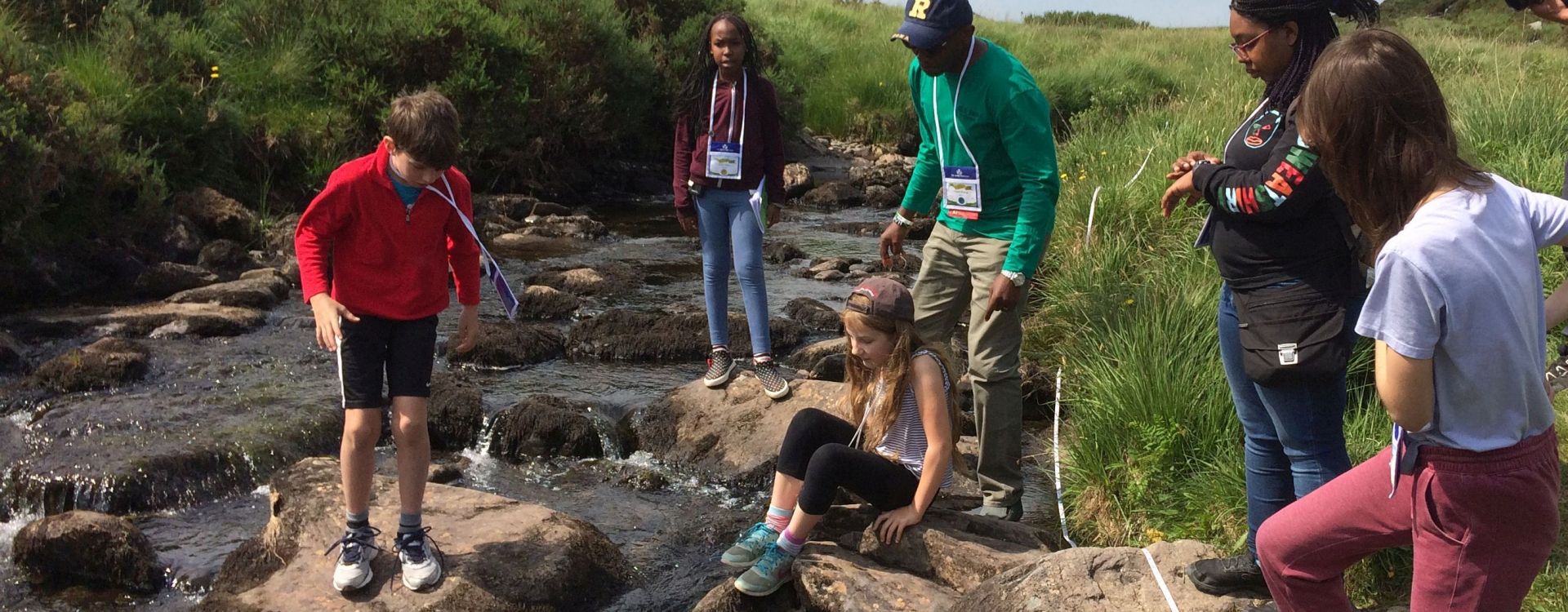Research Questions - Water-Bodies
Water Body Research Questions

In the span of one month, GLOBE schools around the world will collect various data about the condition of water in their local communities. To support this initiative, the GLOBE Water Bodies team has created a set of research questions participants can use to direct their research. Participants will use the Water Temperature, pH and Macroinvertebrates protocols to study their surrounding water bodies. Additionally, GLOBE encourages the addition of any other Hydrosphere protocols during this data gathering initiative.
Objectives
- To increase GLOBE participation and collaboration among schools
- To take a geographic snapshot of water conditions
- To interact with scientists before, during and after the data collection event
Expected Outcomes
- An increased amount of submitted student research projects, participation in International Virtual Science Symposium (IVSS) and collaboration activities
- Increased awareness and connection towards fulfilling Sustainability Development Goals (SDGs) in local communities
- Expanded GLOBE data sets, maps, data visualizations and student analyses
How to Participate
- Become trained in the GLOBE Hydrosphere protocols
- Identify a water body or water source in your neighborhood
- Map the water body and its shores
- Carry out your investigation following the Hydrosphere protocols
- Submit your data to GLOBE's database
- Share your results with other schools as well as with your local community
Research Questions
To answer this research question, participants must make observations using the three required protocols and any of the additional recommended protocols. The measurements for any chosen protocol should be recorded one-to-two times a week on a particular day each week, for example, every Monday and Thursday.
Learn more about GLOBE Protocol eTraining
| Required Protocols | Additional Recommended Protocols |
|---|---|
|
|
It is important to observe a water body's surroundings because the local habitat has a large influence on the water's quality. To document the surrounding environment, participants can:
- Document the site using photographs
- Create a study site map
- Observe the cloud cover to estimate the water source catchment
- Measure the land cover and tree height using The GLOBE Program's App, GLOBE Observer
- Make a record of the water body's surroundings, including:
- Soils
- Vegetation
- Settlement
- Land cover
- Land uses
- Tributaries
- Environmental degradation
- Presence of factories or industrial infrastructure
- Any other relevant environmental factors
Tip: Any of the observations above can be conducted up to a distance of 1 kilometer away from the site.
For this question, participants should create three-to-five community-oriented inquiries that they can bring to local leaders or community members. A few examples of appropriate questions include:
- How is my community using the water body?
- How is my community managing the water source?
- Is there a water user association with in the community and how does it operate?
- How does the water body interact with other parts of the surrounding environment, like the local air, soil, trees or other environmental parameters?
Note: The "What does the environment around your water body look like?" and the "What can your community do about the state of the water body and its environment?" research questions make great starting points for students wishing to pursue a submission to the IVSS.





